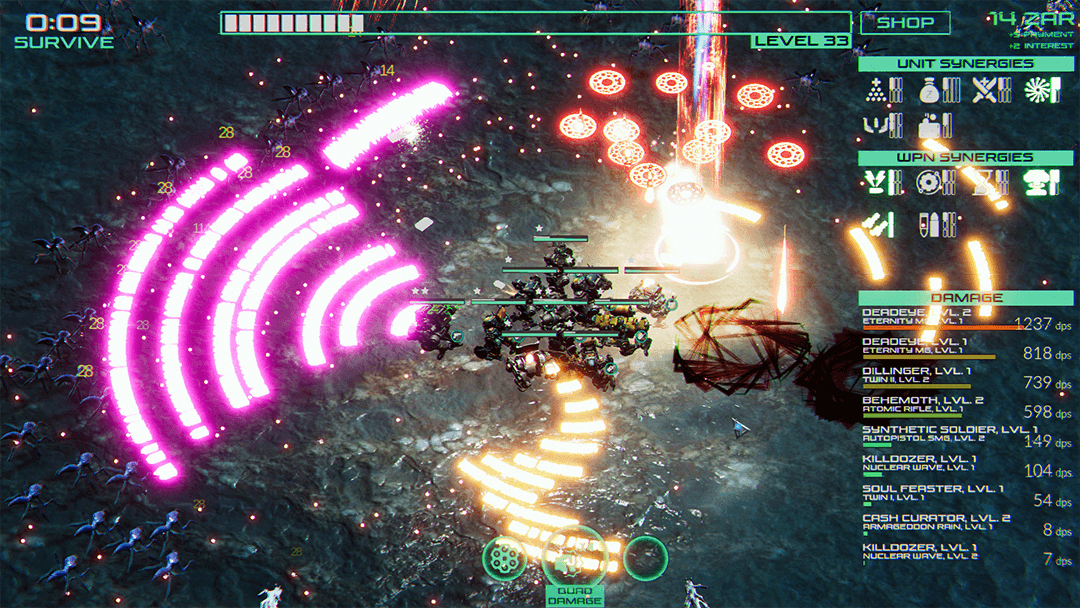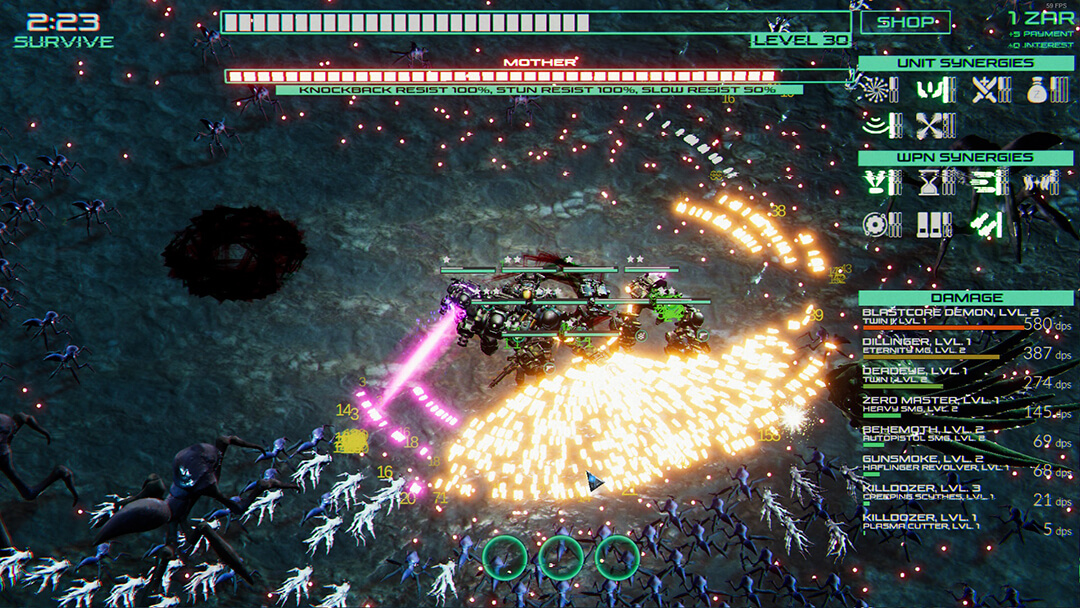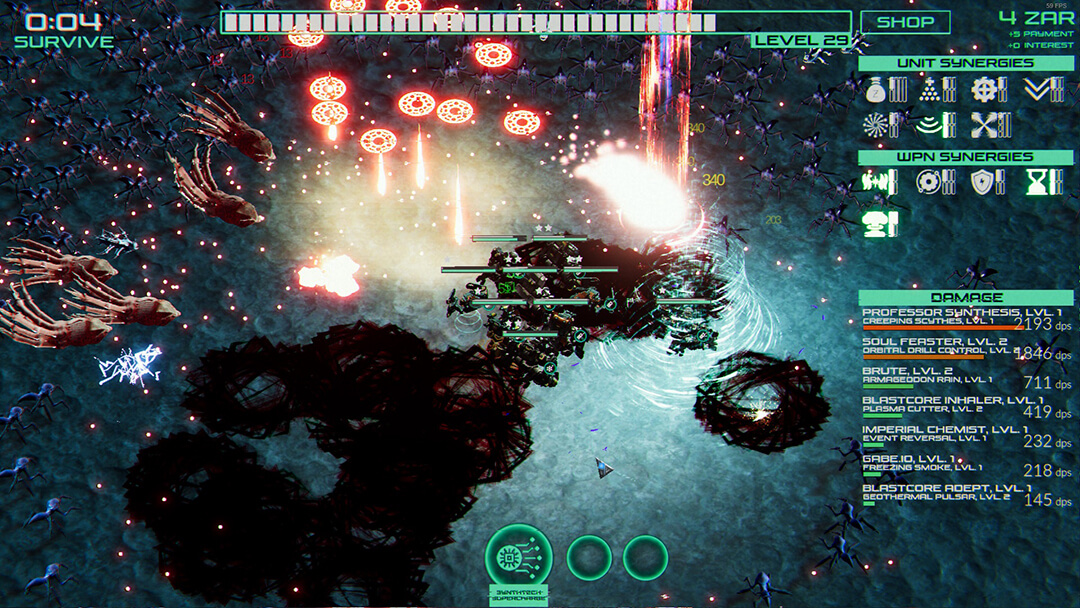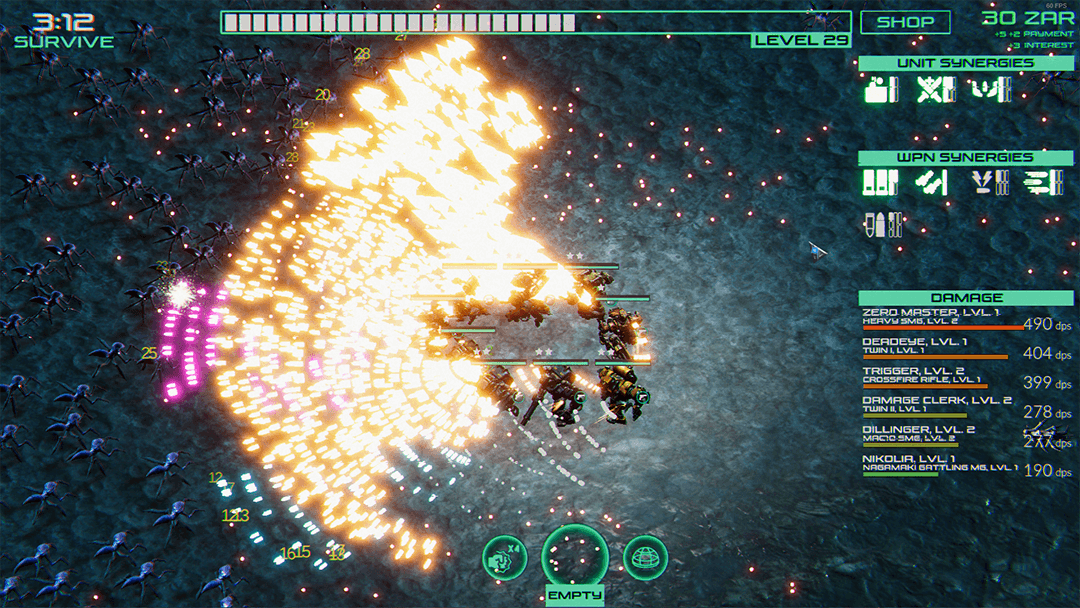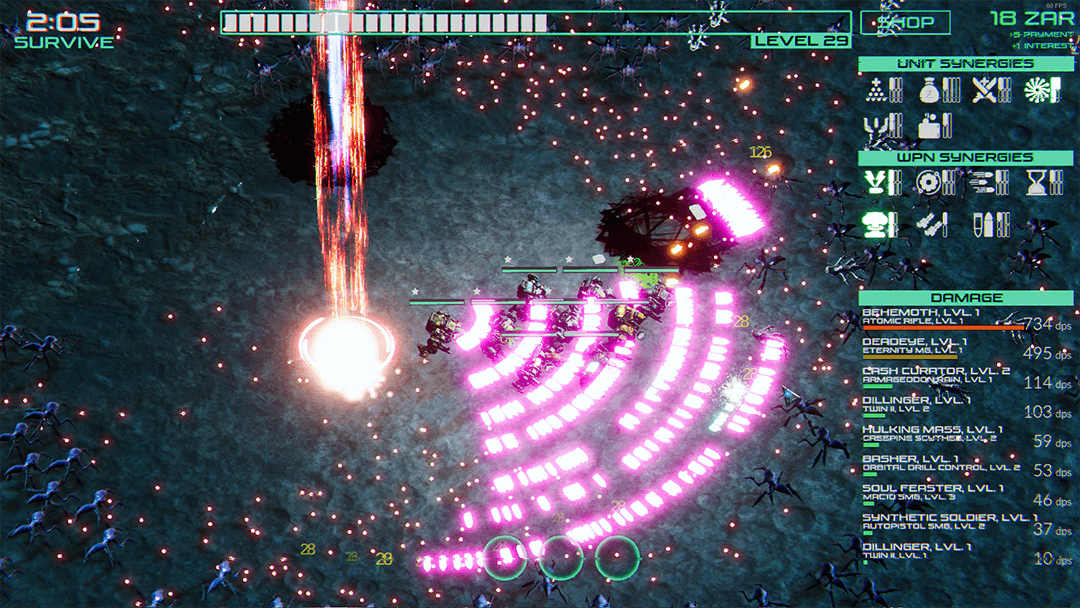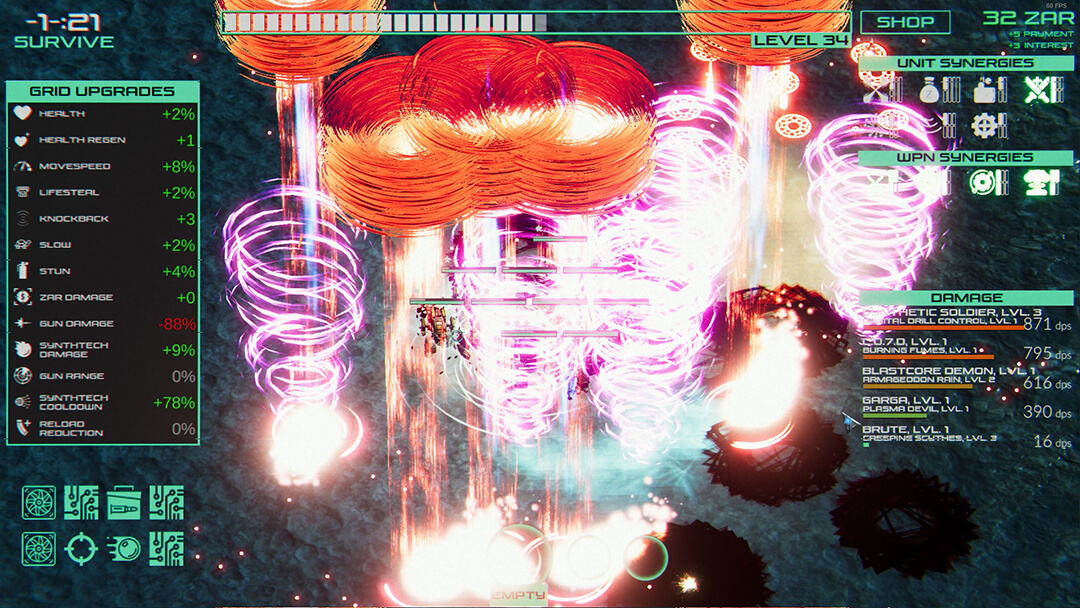“Gentlemen, we need an alternative to nuclear bombardment. My shares won’t appreciate, if the resources that we need to exploit simply cease to exist or are too contaminated to be of any use.”
“Sir, we have machine guns, synthetic technology, and miniature nukes, not to mention several advancements in orbital offensive technology. They don’t explode as much as proper nukes, but they look good.”
“They’ll do.”
“Prepare to deploy. Battle grid initialised. Prepare to deploy,” Brig. Gen. AI-1715 repeated once more and the lieutenant sighed. These announcements were redundant at this point, but AIs liked proper routines and systems. Things just seemed to work smoother when you had a checklist to tick off. Whether the lieutenant liked it or not, her processor didn’t object to the next item on its checklist – weapons check. Lt. Dillinger scanned her XR10 SMG, a basic sub-machine gun with a decent reach that wasn’t long enough to satisfy the lieutenant. “It’ll have to do,” she thought and initiated the munitions loading program. Bullets were no longer loaded with clips. Instead, they were beamed into their storage units directly. That didn’t eliminate reloading times, but it sure made it easier to deploy more weapons platforms and keep them functional. “Functional is important,” mused the lieutenant, “especially if I am going to last through this.” She finished the thought just as the teleportation platform buzzed to life and her surroundings vanished for an instant, reappearing in the form of a vast, desert-like landscape.
“Battle grid deployed,” said Brig. Gen. AI-1715 and Lt. Dillinger’s HUD lit up with the hex program. It designated her position on the battle grid, a sophisticated war platform that allowed New Terra’s AIs to deploy, upgrade, service, and utilise modern weapons of humanity’s interstellar might. The battle grid would function on any surface, any planet, any galaxy, anywhere in the universe. So long as Gen. Overseer had signal reception and transmission capability, the battle grid would bring New Terra’s wrath to her enemies. “And… right on cue,” Lt. Dillinger remarked with what a human would unmistakably describe as a snort.
BATTLE SHELLS
That snort was drowned out by the chitters, clicks, and clatters emanating from beyond the lieutenant’s vision. It didn’t matter. The lieutenant knew that. Her processors calmly registered the incoming audio signals and assigned approximate locations to their sources. The battle grid accepted the AI’s data and in turn, alerted her to the latest choices in equipment and more importantly, other battle AIs. That was the grid’s strength. Under Brig. Gen. AI-1715’s supervision, several AIs would be cloned, programmed, and uploaded into their shells that were chosen at random. For the occasional, superior AI, specific shells were earmarked and maintained in a slightly better fashion, relatively speaking. The battle shells were New Terra’s sparkling achievement, not that they had a lot of sparkle in the first place. Overused, recycled, jury-rigged, and scavenged repeatedly, battle shells tended to look worn out, but their appearance belied their terrifying firepower. Standing tall on massive, metal legs, with a torso adorned with electronic warfare equipment and the occasional weapon hardpoint, with arms wielding guns and synthetic technology, battle shells brought death and destruction to their targets. They were adept at their jobs. They had to be. They needed to be. “Here they come!” said Lt. Dillinger to herself, her voice extraordinarily calm, given that her utterance was an exclamation, but one could hardly expect an AI to raise her voice. She did raise her gun though, levelling its muzzle against the bodies that had begun to appear yonder. The battle shell’s arms creaked, but obeyed. The XR10 SMG had no trigger. It didn’t need any. Lt. Dillinger merely transmitted a signal to the SMG’s CPU and it complied with her command, “Fire.”
The Bugs
Bullets chugged out of the SMG, launching themselves eagerly at the oncoming wave of armoured insects. They struck their targets, albeit randomly. Aim wasn’t something you depended on with slap-dashed equipment. With beamed ammunition, you sprayed and prayed, and hoped your munitions hit something organic, something that moved, something that wanted to dismember you. “Keep it going,” Lt. Dillinger murmured to herself as the XR10 mowed down one bug after another. A few got too close for comfort, but that was the way this gig went down. Lt. Dillinger altered her battle shell’s position on the battle grid to evade the oncoming bugs, but they were relentless. Their bigger, nastier cousins would soon follow and the lieutenant didn’t feel like becoming a heroine. That wasn’t how you avoided recycling and cloning. An AI that was heroic was a stupid AI, an inefficient AI, and ultimately, an underperforming AI. Heroes went to the recycler. Higher quality AIs were the outcome of smart decision making and prudence. Lt. Dillinger opted to be the latter.
SYNTHTECH
She transmitted two requests, both to Brig. Gen. AI-1715, who received and acknowledged them, debited the requisite ZARs from the battle grid’s reserves, and fulfilled the requests almost immediately. The familiar buzz of the transport system sounded once more and Lt. Dillinger sent an acknowledgement to Lt. Merlin, whose battle shell had appeared on the hex adjacent to the lieutenant’s. The ZARs she had spent had allowed the AI to requisition a teammate and an Autopistol SMG. Lt. Merlin had in turn, spent a ZAR to acquire an oil trap, a synthetic technology that allowed the battle grid to convert antimatter into deadly, destructive matter and spawn it almost continuously on its hexes. “Engaging now,” said Lt. Merlin, “Allocate close proximity targets to my hex on a priority basis.” “Acknowledged,” replied Lt. Dillinger, “Shifting targeting protocol to ranged quarries.” Her bullets would eliminate them as they approached and those who managed to penetrate the battle grid would die to his oil puddles. It was a functional arrangement and so long as the ZARs flowed, Gen. AI-519 would have nothing to complain about.
Financing with Biology
Planetary Governor Trent Valen sat on his throne, an elegant, plush, classic armchair that signified the importance of his office and cemented his position in the hierarchy that administered the day-to-day affairs on New Terra. His duties also encompassed inter-galactic affairs, such as they were. Given the pacifist leanings of a majority of New Terra’s inhabitants, humanity had forgone military service and conscription a decade or so ago. While its populace delighted in the celebration of its rich culture and the consumption of delicacies and luxuries galore, it fell upon Gov. Valen to cater to New Terra’s needs. Fuel, resources, matter, anti-matter, whatever it was that New Terra and its denizens required, Gov. Valen would have to supply. It was either that, or lose his head to his many opponents. While juggling a precarious balance sheet, propping up a declining military complex that received little to no public support, and shaping public opinion to suit his political ambitions, Gov. Valen had been at his wit’s end to solve the resource crisis. New Terra consumed far more than she or her orbital manufactories could ever harvest, produce, and supply. Interstellar colonies could bolster that supply a tad, but they had their own needs and importantly, a growing populace. The crisis was growing and had Gov. Valen not hit upon a find that revolutionised New Terra’s logistics, manufactories, and supply chains, humanity would have descended into dire straits.
THE ZARCAR
Biology was a funny thing. AI was funnier. Science was the funniest of all. On planet Z-13-A-27-R-99, New Terra’s scientists discovered the bugs. Their biology could be harvested and adapted by AI-powered technology and funny science to produce a resource that would provide for New Terra’s needs – ZARCAR. “Wouldn’t those pacifists down there just love to know where their precious food and wine come from? Wouldn’t they just?” mused Gov. Valen as he read the latest battle grid data from planet Z-13-A-27-R-99. A pacifism that was supported by constant war. A war that would never end. Not as long as Valen had anything to say about it. New Terra had the battle shells. It had the weapons. It had the synthtech. It had the AIs. All of these were powered and funded by ZARCAR, used in both financial and material forms. Gov. Valen grinned as he thought of the sheer apoplexy that would grip the pacifists on New Terra, if they ever learned of the conflict that fuelled their happiness. And fuel their happiness it would, for decades and centuries on end if Valen could help it. He would exploit the battle grid and the AIs, using them to control the battle shells that slaughtered the bugs, which happened to be in abundance across many planets. Their biological matter would be harvested to serve Valen and his subjects. Humanity would endure. New Terra would thrive. Valen’s power would grow. All this under the rest of humanity’s blissfully ignorant noses.
The battle rages. The battle shells are ready. The AIs are raring to go. Will you fight the bugs? Will you harvest the ZAR? Will you engage in carnage, for humanity?






